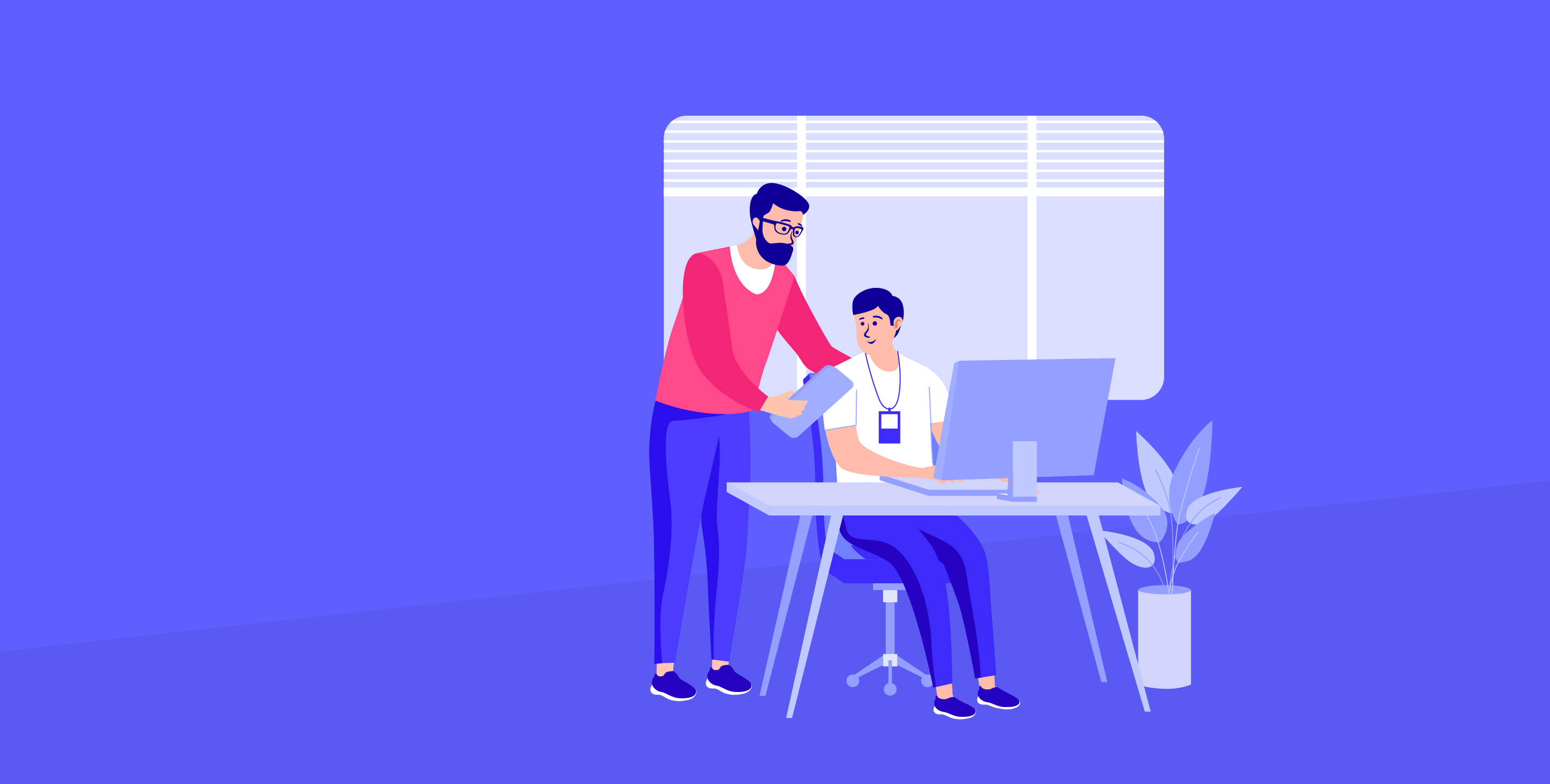The Human Resource industry has already been on the frontlines of adopting AI, conversational technology, and HR chatbots in their day-to-day work. It’s an active ongoing process – so much so that Gartner even forecasts that 30% of all hiring activities will be fully performed by AI. It’s interesting how the field that literally features the word “human” in it is among the most suitable for automation.
HR bots have already proved helpful in shortlisting, screening, sourcing, and interactions with potential hires. They can be used to locate candidates, create offers, sort through CVs, and act in the company’s name in the job market. These activities are performed by AI, chatbots, and data as service platforms – the ones that handle data on a regular basis.
How Do HR Chatbots Help In Employee Onboarding?
Organizational tasks, performed by HR managers, are not easy to automate.
HRs track the dynamic within the team, make sure the communication is transparent and healthy, and connect the interests of employees and employers. That’s not something that can be easily automated.
On-boarding, on the other hand, requires less context – the procedures are rather predictable. Using AI for onboarding can help HR managers jump-start new hires into action, automatically generate documentation, answer questions, and integrate a new member to the team.
Let’s take a look at the main areas of onboarding where chatbot platforms are already actively helping out.
Pre-onboarding
Pre-onboarding is a crucial stage to welcome the new candidate. At this point, even a small organizational problem or misunderstanding can affect the hire’s motivation to work with the company.
This is especially true for software development onboarding, testing, data science, and marketing. These are highly competitive fields and employees have a lot of offers to choose from.
Furthermore, an HR chatbot can manage interactions between an employee and a company at this stage by performing several simple tasks:
- Providing updates on meetings and call schedules.
- Accumulating the information that the candidate needs to go through in preparation for an interview or an organizational call.
- Send details about the offer, financial conditions, and job description.
- Chatbots can generate automated replies where they describe why the candidate’s profile impressed the team.
- Providing FAQs about the company, career prospects, vacations, sick days, available infrastructure, etc.
HR managers often don’t have time to answer multiple clients, and it’s easy to miss crucial details. So chatbots should be the link between the company and new employees. By setting up a chatbot for HR one time, companies can introduce consistent best practices into their pre-onboarding.
Completing paperwork
Filling out agreements, contracts, and NDAs can be confusing. Often, employees can be confused about understanding which information belongs where, forget to attach a document scan or sign on the wrong spot. The stage of filling out documentation creates a lot of questions, and they need to be resolved quickly in order for a hire to start working.
Here’s how an HR bot can help with documentation:
- Providing a step-by-step explanation: They can guide a new hire through the process of signing the documents in real-time.
- Answering questions: Just like with on-boarding, chatbots can create a FAQ about documentation.
- Pointing out mistakes: Chatbots, equipped with machine learning and data analysis, can take a look at the filled-out document and point out its issues.
The main advantage of using a chatbot at this and other onboarding stages is their 24/7 availability. Whenever a new employee has a question about documentation, chatbots for HR are ready to take it in.
Provide key information
During the onboarding and first days of work, employees are often confused about their tasks, scope, responsibilities of team members, etc. Chatbots can help hires to look up any team member anytime, find out positions and scopes, and get updates on tasks and team agendas.
The information provided by a chatbot can orient the employee in the workplace. For instance, an AI-based assistant can give the following details:
- Generate a to-do list: With the help of machine learning and initial customization, chatbots can get good at distributing tasks to a new hire.
- Signaling availability: Chatbots can send alerts about managers’ availability, letting employees know when they can catch up on their responsibilities.
- Connecting an employee to the rest of the team: A chatbot can update the entire team on a hire’s competences and their best qualities.
- Conduct surveys: Chatbots can help evaluate the teamwork and performance in the company.
So, chatbots can indeed become an intermediary between a new hire and the team, eliminating confusion.
Feedback processes at each step
A new employee requires evaluation of every completed task, and typically needs to be overseen more. Management can’t always keep up, which results in long feedback loops and inefficient work.
HR bots can aggregate the data for the review in one place and send it to the manager. Similarly, it can provide a template that employees can use to send their questions.
Handling queries
Whatever request a new employee has about organization – be it about the schedule or the workflow – an HR manager isn’t always available to answer it.
A chatbot, however, will be able to solve an issue as soon as possible. It can provide an answer immediately, or send it to the HR manager in an organized way if there’s no default answer in the program.
Both of these competencies are highly useful for busy HR managers and their teams. On one hand, you can decrease the number of queries to process by outsourcing the simplest ones to chatbots. On the other hand, you can sort them by topic and the responsible entities, and schedule time for answering.
Managing privacy
Chatbots can provide employees with a detailed account of how their data will be stored, what are their confidential rights, and how all logs should be managed.
Also, HR bots can be a key part in safety training. When a new hire joins the company, it is crucial to familiarize the team member with the best safety practices.
Additionally, chatbots could help prevent security issues that are caused by employee negligence. They can answer questions, provide lists of tools and best practices, compile checklists, and send data status updates.
Mentoring
Many companies have a practice of assigning responsible people who will oversee the onboarding of the new employee. However, this ends up not being a mentor’s main priority as they have other tasks to handle as well.
Chatbots could help them automate easy tasks – like answering simple requests or sending documentation about the company.
On top of that, chatbots can remind mentors to catch up with the new employee. Just like in previous cases, chatbots can act as intermediaries between an employee and a mentor.
Winding Up
Using chatbots in the HR field is becoming a common practice. Onboarding methods are among the first ones to undergo change.
Exchanging information is the key process in welcoming a new member to the team, and chatbots excel at this. Using chatbots during onboarding helps to minimize bottlenecks, respond to queries the moment they come through and connect new hires to the team.
Chatbots have the crucial advantages of being accessible 24/7. Even when managers can’t respond to a concern, a chatbot can be a backup option. This way the company leaves a great impression on the new employee regardless of workload changes. So, chatbots help HR teams achieve the twin goals of onboarding – instructing and leaving a great first impression.
14-day free trial • Cancel Anytime • No Credit Card Required • No Strings Attached






